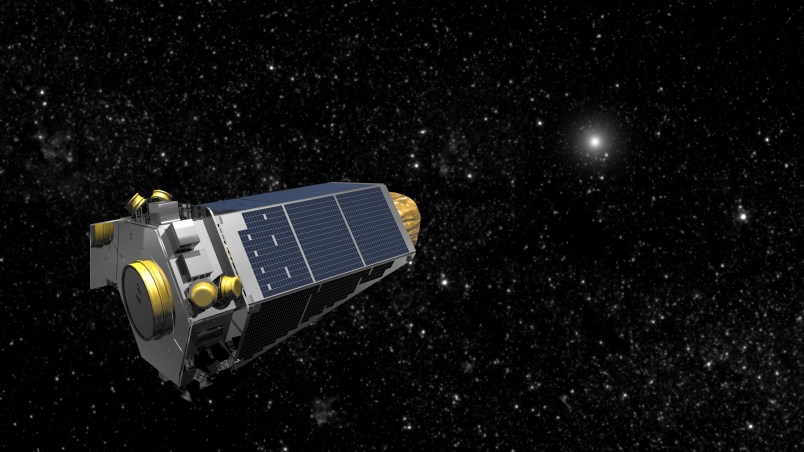CAPE CANAVERAL, Fla. (AP) — NASA is trying to resuscitate its planet-hunting Kepler spacecraft, in a state of emergency 75 million miles away.
The treasured spacecraft — responsible for detecting nearly 5,000 planets outside our solar system — slipped into emergency mode sometime last week. The last regular contact was April 4; everything seemed normal then.
Ground controllers discovered the problem Thursday, right before they were going to point Kepler toward the center of the Milky Way as part of a new kind of planetary survey. Kepler was going to join ground observatories in surveying millions of stars in the heart of our galaxy, in hopes of finding planets far from their suns, like our own outer planets, as well as stray planets that might be wandering between stars.
This is the latest crisis in the life of Kepler.
Launched in 2009, the spacecraft completed its primary mission in 2012. Despite repeated breakdowns, Kepler kept going on an extended mission dubbed K2 — until now. The vast distance between Kepler and Earth make it all the harder to fix. From 75 million miles away, signals would take 13 minutes to go back and forth, according to mission manager Charlie Sobeck at NASA’s Ames Research Center in Mountain View, California.
Recovering from this emergency condition “is the team’s priority at this time,” Sobeck said in a web update this weekend.
More than 1,000 of Kepler’s detected 5,000 exoplanets have been confirmed to date, according to NASA.
Kepler is named after the 17th century German astronomer and mathematician Johannes Kepler.
___
Online:
NASA: http://www.nasa.gov/mission_pages/kepler/main/index.html
Copyright 2016 The Associated Press. All rights reserved. This material may not be published, broadcast, rewritten or redistributed.







Uh-oh. This is how Nomad started, and that didn’t go well AT ALL.
Is it too early to blame Obama?
Yes, but not too early to blame Clinton.
This thread is hysterical. hahahaha
This won’t happen during the Cruz Administration. We won’t be wasting money like this, trying to figure out things that the Bible explains satisfactorily.
And it won’t happen during the Trump Administration. After all, what kind of chump puts money into a venture that has no profit potential at all? Unless, of course, we can figure out how to get the Alpha Centaurians to pay for it.